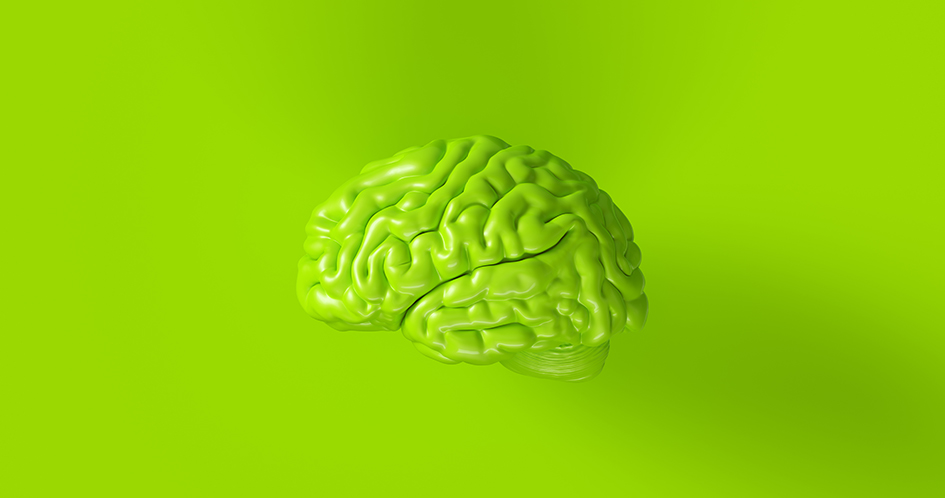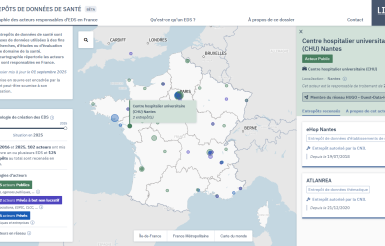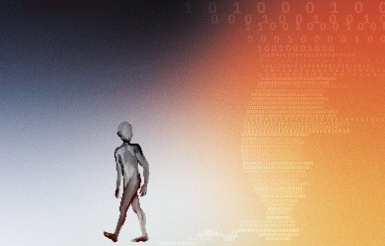[Article 1/2] Neurotechnologies: conquering the brain
Rédigé par Régis Chatellier
-
03 October 2025The brain and nervous system have become a new frontier for what are known as “neurotechnologies.” Initially confined to the medical sector, applications are now being developed in a wide variety of private sector and commercial fields. This article provides a definition of these neurotechnologies and an overview of the types and contexts of use for “neurodata”.

[File] Neurotechnologies, from the realm of possibilities to regulatory projects
- Article 1 - Neurotechnologies: conquering the brain
- Article 2 - Neurodata is personal data like no other
The study and understanding of the brain has always fascinated humanity, from the earliest medical treatises to the various beliefs developed within human societies. Over the past 50 years, neuroscience has seen the emergence of a new field: “neurotechnologies”, which aim to understand and influence the brain and nervous system. These neurotechnologies operate on the basis of personal data collected directly from the human body.
Initially reserved for the healthcare sector, for repairing bodies and minds, technological advances in this field are increasingly being used for purposes as varied as leisure, education, commerce, etc. They are part of a long history of humanity's relationship with its own finitude and the desire to bring humans and machines together, as seen in cybernetics and transhumanism. As David Le Breton points out (L'Adieu au corps, 1997, p.185), Norbert Wiener, in his 1948 book Cybernetics, “was undoubtedly the first to blur the boundaries between automatons and living beings”. “The removal of all obstacles between the computer and oneself leads some to desire symbiosis with the machine or to seek closer ties with it in the form of a dreamlike cerebral incorporation of chips”. From the point of view of those who wish to use these technologies, it is no longer a question of healing, but of interfacing, or even augmenting oneself. More simply, from the point of view of the promoters and companies developing these technologies, it may be a question of improving the experience, facilitating teaching and education, or sometimes selling certain products more easily.
Healthcare, the primary testing ground
Historically, the field of health is where research and early experiments were developed, within a highly regulated framework.
The treatment of epilepsy has been the subject of research since the 1950s, leading to the development of “invasive” implants for neurostimulation. In 1997, for example, the US Food and Drugs Administration (FDA) authorized the marketing of implantable devices such as the “deep brain stimulation system” (DBS) for the treatment of tremors and the “vagus nerve stimulator” for drug-resistant epilepsy. Medtronic also offers deep brain stimulation devices for the treatment of epilepsy and Parkinson's disease. Implants can also be used to restore or improve hearing and enable people to regain the use of their limbs, as in the approach developed by scientists at the Neurorestore Center (EPFL/CHUV/UNIL), “which combines rehabilitation robotics and spinal stimulation to restore movement in people with spinal cord injuries”.
Alongside these initiatives, neurotechnologies are attracting Silicon Valley business leaders such as Elon Musk. In 2016, he co-founded Neuralink, “with the goal of researching and developing direct neural interface brain implants that can be implanted in patients with brain damage (Wikipedia)”. In 2023, Neuralink obtained authorization to test its neural implant on humans. In January 2024, it announced that it had implanted its system in its first patient with quadriplegia. However, the company continues to raise questions about the actual results of its devices. In February 2025, twenty FDA employees who could have been involved in evaluating Neuralink were fired by DOGE, the Department of Government Efficiency, then headed by Elon Musk. In August 2025, Sam Altman, CEO of OpenAI, entered the neurotechnology race by funding Merge Labs, a startup whose goal will be to connect human brains and computers using artificial intelligence systems. This was a jab at Elon Musk, with whom he has a rivalry, but also an older project. As early as 2017, he detailed his vision of “The Merge” concept in a blog post: “The Merge can take many forms: we could plug electrodes into our brains, or we could all just become very close friends with a chatbot”.
In this first article, we take a look at what neurotechnologies are, their definition, the different forms and modes of action they encompass, as well as new uses and sectors of activity.
[Cyborgs], aren't just Robocop, they're our grandmothers with pacemakers.
What are neurotechnologies?
In a document published in 2022, The Risks and Challenges of Neurotechnologies for Human Rights, the United Nations Scientific Advisory Board defines neurotechnologies as “a generic term referring to all technologies that record or modify the activity of neurons in the human nervous system”. In 2019, in its recommendation on responsible innovation in neurotechnologies, the OECD described them as “devices and procedures used to access, study, evaluate, model, monitor, or intervene in the functioning or structure of the neural systems of natural persons”. The data collected by these devices - neurodata, or “neural data” - primarily concerns data collected directly from a person's neural systems, whether from the brain or the nervous system, but also data deduced and inferred from them.
In a report published in 2024, the Advisory Committee of the UN Human Rights Council points out that by establishing a gateway and a direct connection between the human brain and external devices, neurotechnologies give external actors “the unprecedented ability to influence an individual's enjoyment of their rights,” which raises “enormous ethical issues and calls into question the very interpretation of fundamental human rights principles.” This is in a context where the sector has seen significant advances in recent years, driven by major technological developments in terms of devices, computing power, and the development of artificial intelligence systems.
A typology of forms and actions
Les dispositifs et les moyens par lesquels la collecte de ces données peut être effectuée peuvent varier selon leurs modalités, leurs objectifs, la manière dont les personnes concernées les perçoivent et leurs interactions. Ceci donne lieu à une typologie des critères suivant trois modalités d’action, d’abord la manière et les dispositifs à partir desquels sont collectées les données, depuis des implants jusqu’à la collecte à distance. Ensuite, l’objectif des technologies mises en œuvre, qu’il s’agisse de lire et comprendre le cerveau, d’agir sur celui-ci, ou de l’interfacer avec des systèmes. Enfin, selon que les personnes concernées soient actrices de cette collecte, ou qu’elles soient passives.
Different types of sensors and stimulators
In order to function, neurotechnologies must deploy sensors or stimulators to connect to the body and brain. These devices can take three forms: invasive, semi-invasive, or non-invasive:
- Invasive: this involves the use of devices implanted directly into the person's brain, requiring cranial surgery. This type of solution allows very accurate data to be collected, or direct action to be taken on the nervous system. Due to their invasive nature, they carry the risks inherent in any surgical procedure, such as infection, rejection, and scarring. These devices may include intracortical electrodes, implanted in the cortex to record or stimulate individual neurons (used, for example, by Neuralink), electrocorticography (ECoG), which involves placing an electrode grid directly on the cortical surface (under the dura mater, the membrane surrounding the brain), or deep brain stimulators (DBS), which involve implanting electrodes in deep nuclei (e.g., the subthalamic nucleus for Parkinson's disease).
- Semi-invasive :these are epidural or subdural devices placed close to the cortex, such as epidural or subdural electrocorticography, electrodes placed on the dura mater (and therefore not in direct contact with neurons), or Stentrodes (Stentrode BCI), electrodes inserted into cerebral blood vessels (via a catheter), allowing activity to be recorded without opening the skull.
- Non-invasifs : these devices are placed on or away from the body, for example in the form of a headband, patch, or connected glasses, and enable data to be collected without the risks associated with surgery. Examples include electroencephalograms (EEG), magnetic resonance imaging (MRI), functional magnetic resonance imaging (fMRI), and transcranial stimulation (TES) using magnetic fields or electrical currents applied to the scalp. Initially developed for medical use, this type of device is now being tested outside the medical field, as its use is easy and poses no direct health risks.
Among non-invasive devices, the EDPS distinguishes in its Tech Dispatch between those that operate “locally,” with sensors placed in contact with the person, allowing them to be aware of the data collection, and “remote” devices, whose sensors are not in contact with the person. In the latter case, the collection may be invisible to the person. In 2016, LINC identified a remote emotion sensor developed by MIT that measured heart activity to infer emotional states.
Different courses of action
Neurotechnologies can be designed to act in several ways: by “reading” or “writing” to the brain, or as interfaces.
- In reading, or “neuroimaging,” the aim is to monitor brain structure and function. This may involve, for example, electroencephalography (EEG), functional magnetic resonance imaging (fMRI), or any other type of sensor that collects neural data. Data collection can be “active,” requiring the person to perform specific tasks such as movements, calculations, reading, watching a video, or listening to certain sounds such as music, which will result in a recording of the response to the actions or stimuli. It can also be “passive,” without the person having to perform any particular action. This may involve a longer-term recording, for example, to measure fatigue levels, attention span, or arousal levels.
- In writing, it is no longer a question of collecting or capturing data, but of stimulating the brain by sending electrical, magnetic, or ultrasound signals to influence certain of its functions. A distinction can be made between neurostimulation (producing direct, short-term effects), or “pressing a button” to activate/deactivate a function, for example to treat tremors in Parkinson's disease, or to act on peripheral nerves or muscles to restore movement in paralyzed patients; and neuromodulation (aimed at modifying the way the brain works in the long term), for example stimulating the vagus nerve (vagal neuromodulation) to treat epilepsy or depression. Some systems operate in a closed loop and adapt in real time according to the activity detected (reading) without the data being sent to an external server.
- Interface: In a third use case, as described by the United Nations Scientific Advisory Board, neurotechnologies consist of “brain-computer interfaces” (BCI) or “brain-machine interfaces” (BMI). It specifies that « brain-machine interfaces tend to refer to machines implanted directly into humans, while brain-computer interfaces can also cover non-invasive technologies".
The field of neurotechnology covers a wide variety of forms and modalities, each of which presents a series of challenges for data protection authorities, since they involve the collection and processing (including alteration) of personal data that is sometimes unexpressed. This is in a context where, as we will see below, the field of research, experimentation, and use cases tends to extend well beyond the medical field alone, with associated risks for the rights of the individuals concerned.
Towards an expansion of application areas and use cases
The fields of application have recently expanded, for purposes that can be classified into the three categories mentioned above: reading, writing, and interface. These developments are taking place in a context where the neurotechnology market is booming and is expected to grow by $21 billion by 2026, to the point where it could become part of our daily lives fairly quickly.
Reading: understanding, analyzing, predicting the brain
Applications designed to read and understand the brain have developed extensively in sectors as varied as education, entertainment, economics and marketing, work, as well as security and surveillance. This involves collecting data from the brain and nervous system using dedicated devices in order to measure activity and infer analyses and results based on the objective pursued. Increasingly, these devices are being combined with artificial intelligence systems.
To improve capabilities, experience
In the field of education, neurotechnologies are being tested to improve performance and learning outcomes. In 2019, The Guardian reported on a primary school in China where headbands equipped with sensors similar to electroencephalogram (EEG) electrodes were used to measure students' brain activity during certain exercises. This is part of the methods associated with Learning Analytics, which LINC explored in an article in 2017.
In video games, neurodata can be used to maximize the player experience, allowing the game to adapt to reactions and behavior in order to enhance the enjoyment of playing. LINC explored such uses as early as 2015 in its IP4 report on the creative industries. In a literature review published in 2025, researchers list various possible applications based on brain-machine interfaces, enabling non-invasive modeling of responses to visual stimuli (Visual Evoked Potential - VEP) for the acquisition and processing of electroencephalographic (EEG) signals. It would be possible to improve accessibility for players with physical or cognitive disabilities, to take charge of difficulty adjustment and personalization of gameplay, multiplayer interactions, etc. However, the authors point out that challenges remain, particularly due to the technical limitations of these systems, the complexity of data interpretation, and user adaptability. As an extension of video games, metaverses and, more broadly, immersive interfaces have raised many questions about the sensitivity and granularity of data potentially connected by virtual reality headsets.
To anticipate behaviors
In companies, neurotechnologies can be used to monitor employees, improve their performance, and recruit or promote staff. In 2011, Raja Parasunaram described the new field of neuroergonomics, which studies the human brain in relation to performance at work and in everyday life, based on theories and principles from ergonomics and neuroscience. Neuroergonomics has several uses, including monitoring employees as they learn new tasks to determine when they have mastered them. It can also be used to measure in real time the fatigue of employees in certain positions that require optimal alertness and determine when they need to be replaced. For example, in 2018 in China, “workers, soldiers, and train drivers were equipped with helmets or caps fitted with sensors to measure stress levels at work, for example, to adjust the pace of production.” In aviation, research is being conducted to measure pilots' mental load using machine learning techniques on electroencephalogram (EEG) data, in a context where an increase or decrease in mental load can impair auditory and visual attention, leading to piloting errors. Neurotechnologies are also used for recruitment or to measure employee productivity.
In the field of security and justice, the oldest and best-known use case remains the lie detector. However, there are many initiatives aimed at assessing the risk of reoffending: more than 60 in the United States in 2020, according to researcher Angèle Christin. Some authors predict that the use of neurotechnologies could improve the efficiency of these predictive systems in the near future, thereby enabling “the early release of prisoners who are no longer considered a risk”. However, they point out the risks to the autonomy, mental integrity, and data protection of prisoners who would be required to undergo these neurotechnologies.
To maximize sales
The economics and marketing sectors have been investing in neurotechnologies for several decades. The term neuroeconomics first appeared in 2003 in Paul W. Glimcher's book, Decisions, Uncertainty, and the Brain: The Science of Neuroeconomics. This branch of research lies at the intersection of economics and cognitive neuroscience, and aims to study the influence of emotional factors on purchasing and investment decisions, among others. Neuromarketing, a term first used in 2002, focuses more specifically on predicting consumer choices and tastes based on the analysis of brain mechanisms and areas that are activated or deactivated during a purchase, or when people are exposed to advertising, packaging, etc. The goal is to produce tools for persuading consumers, reducing uncertainty, and predicting behavior and decision-making.
Until now, this has mostly involved analyses carried out on samples of people based on eye tracking and the collection of neurodata to test or improve certain products or services, most often in a laboratory setting. In general, this involves binary classification as “like” or ‘dislike’ using electroencephalograms. With the development of new interfaces, as noted by the ICO, non-invasive devices could in the future be « capable of reading reactions and could be used at home to tailor products to consumer preferences. These could be audio headsets equipped with devices that would target advertising and commercial messages for various products, similar to online tracking using cookies. This could be used to generate new personalized responses based on users' search engine usage ». These technologies could also be integrated, as we noted in 2022, into virtual reality devices.
Since its inception, neuromarketing has been controversial, particularly because it involves manipulating consumer behavior without their knowledge, using mechanisms they are unaware of. A parallel can be drawn with the mechanisms at work in the attention economy, particularly through dark patterns, which have similar objectives. The processing and manipulation of data obtained through neurotechnology raises further ethical and legal questions.
Interface: controlling an application or device
In this second type of use case, data collected by human-machine interfaces is processed in order to produce an action on an object, software, etc. It is no longer a question of controlling a device via a traditional human-machine interface - a keyboard, mouse, or even voice - but directly via the nervous system, or “thought”.
This type of interface is used in the healthcare sector to control orthopedic aids, prostheses, or medical implants. One example is a brain implant “that decodes the user's intention and transforms it into a signal to a robotic arm,” giving autonomy to quadriplegics, or the development in 2024 by the Massachusetts Institute of Technology (MIT) in Boston, USA, of the first “bionic leg” entirely controlled by the brain. Thanks to this, “seven people with amputated legs were able to walk again in an almost natural way, without conscious thought”.
In France, the Hybrid research team, based in Rennes, has specialized since 2013 in 3D interactions and virtual environments using the body and mind, and develops mind-based control systems. In 2013, it designed the OpenViBE software platform, now used worldwide to develop brain-machine interface applications compatible with numerous electroencephalogram devices. These interfaces can be used in video games and virtual reality to control games or certain software. They can also be used to control machines or applications in the robotics sector, and even in the defense sector to control weapons, mine-clearing robots, vehicles, or drones.
Systems intended for the general public are coming onto the market. Meta is investing in interfaces based on nervous system data with its EMG wristband. According to Meta's website, this device uses electromyography, which "measures the electrical signal sent by the brain to the wrist muscles when gestures are made while wearing the wristband. The aim is to detect signals based on the action the user intends to perform, such as clicking, selecting, or scrolling. The wristband already allows users to control applications or play simple video games. Meta plans to combine them with augmented reality glasses in the fall of 2025.
Writing: neurostimulating and/or neuromodulating the brain
The third major type of use is no longer aimed solely at collecting, reading, and interpreting neurodata, but at acting “in writing” through feedback loops and sending signals to modify the way the brain or nervous system works. A distinction can be made between neurostimulation, which aims to produce reactions to the message sent, and neuromodulation, which acts over a longer period of time to modify the way the brain functions (for healing or improvement).
As specified by the EDPS and the AEPD, in psychology this may involve the processing of neurodata to modify the way the brain reacts to certain stimuli for therapeutic purposes, by monitoring brain activity and providing feedback, usually in the form of visual or auditory signals. This type of treatment can be used, in particular, for the treatment of attention disorders, anxiety, depression, epilepsy, autism spectrum disorders, insomnia, or drug addiction.
Neurological data processing can also be used to improve attention span, concentration, cognitive and emotional abilities in healthy individuals. The aim here is to train the brain to achieve “neuro-enhancement” and obtain benefits that go beyond the normal functioning of an average brain. Although the effectiveness of these systems in healthy adults has not yet been proven, there are already applications on the market. American football players, basketball players, and military personnel, for example, use the NeuroTracker solution to “sharpen their reflexes, improve their field of vision on the field, and think faster under pressure".
* * *
These new developments in neurotechnology, and their shift from the highly regulated medical field to the private sector and commercial uses, are contributing to growing concerns about the possible consequences of misuse of neurotechnology. The status of this data from a personal data protection perspective raises certain questions in particular. More broadly, it is the ethical framework for these practices and the limits to be set that are the subject of much research, which we analyze in a second article.



